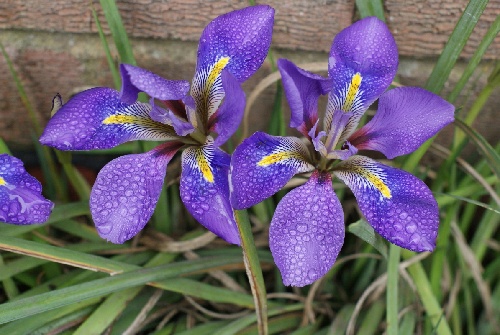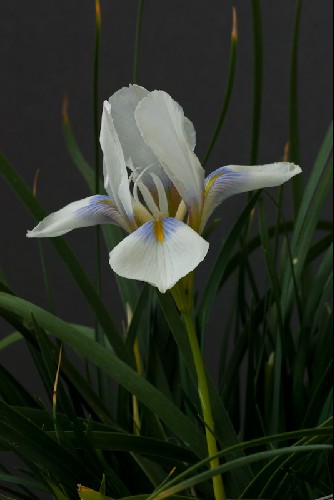Authors: Poir.
The most commonly grown winter-flowering rhizomatous iris, still widely known as stylosa. Clump-forming, up to 45cm in height in mature foliage. Leaves evergreen, leathery, about 1cm wide. Flowers fragrant, to 7cm wide with a stalk-like tube 10-20cm in length, opening among the leaves, lavender-blue, the falls having a yellow zone and darker veining, late autumn to early spring. North Africa and the eastern Mediterranean, on rocky hills, sometimes almost scrub. Variable in the wild as to flower size and colour, leaf width, overall size and vigour. Most of the following cultivars were originally collected in the wild, or raised from wild seed: 'Alba' produces blooms with rather narrow standards and falls of creamy white; 'Angustifolia' has narrower leaves and smaller flowers which are basically white margined lilac; 'Cretensis', see I. cretensis, 'Ellis's Variety' has narrow leaves and deep violet-deep blooms; 'Marginata' produces lilac flowers both falls and standard margined white; 'Mary Barnard' reputedly came from Algiers and is a good shade of violet-blue; 'Oxford Dwarf may be a form of I. cretensis, the white flower having lavender-tipped, purple-veined falls bearing a central orange line; 'Speciosa' has shortish narrow leaves and strongly fragrant, velvety, deep violet blooms; 'Starkers Pink' is very dwarf, bearing pinkish-lavender flowers; 'Walter Butt' forms a robust plant with blossoms of light, almost silvery lavender; 'Variegata' has lavender standards and falls irregularly streaked and mottled purple, the overall effect suggesting a virus infection.


Sign up for our newsletter to receive our monthly update direct to your inbox. Featuring our latest articles and news.
Built by Atomic Smash

